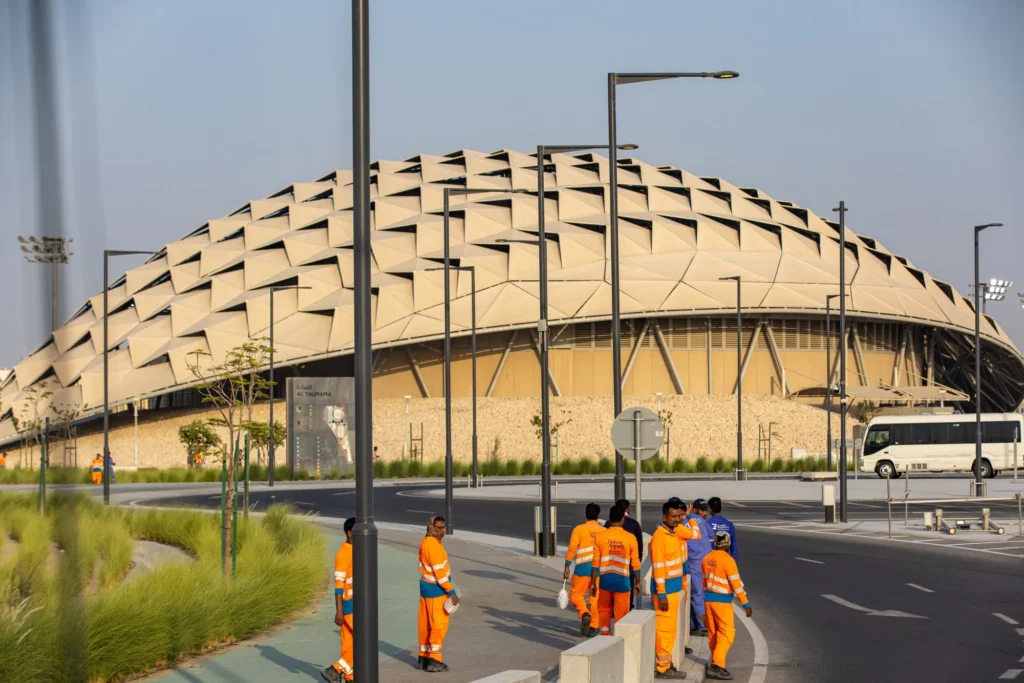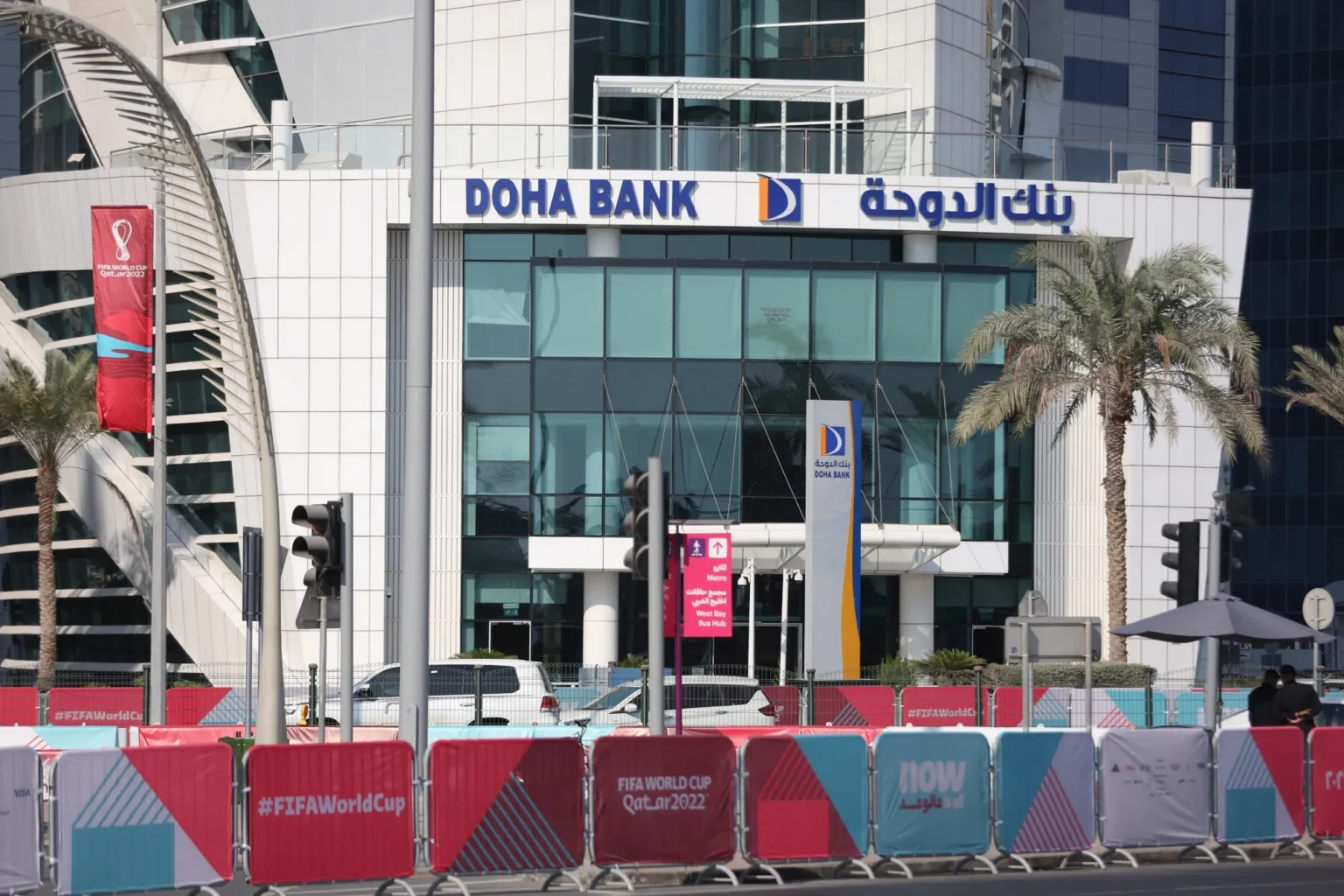Introduction
In the aftermath of the 2022 FIFA World Cup, Qatar’s banking sector is facing significant financial challenges. The massive borrowing undertaken to finance the tournament’s infrastructure has resulted in mounting loan losses, raising concerns about the country’s economic stability. With billions spent on developing state-of-the-art stadiums, hotels, and other facilities, the financial burden now falls on Qatari banks that extended loans to various projects and businesses. As the dust settles, the nation must now navigate the economic consequences of its ambitious spending spree.

A Legacy of Ambition and Debt
Qatar’s successful bid to host the 2022 FIFA World Cup signaled the start of an ambitious infrastructure overhaul. The country invested an estimated $300 billion in preparing for the global event. This included building world-class stadiums, expanding roads and highways, developing a modern metro system, upgrading sewage systems, and constructing luxury hotels. These projects were largely financed through loans from local banks to real estate developers, construction firms, and hospitality businesses.
For years, Qatar’s rapid infrastructure expansion was seen as a sign of progress, but the economic burden has become apparent as many of these investments have failed to yield the expected returns. With the event over, the demand for these facilities has declined, leaving banks exposed to financial risks associated with non-performing loans.
Rising Loan Losses and Government Intervention
Nearly two years after the World Cup, Qatari banks are grappling with a surge in bad loans. Many of the loans issued to developers and contractors have become non-performing, meaning borrowers are struggling to repay them. This has resulted in an increase in the percentage of non-performing loans (NPLs) across Qatar’s banking sector.
The government is now considering several measures to stabilize the banking system. Potential strategies include restructuring troubled loans, injecting liquidity into the financial sector, and facilitating mergers between struggling banks. The government has a history of stepping in to support the financial sector, having previously injected funds into banks to prevent systemic failures during past economic downturns.
Real Estate and Hospitality: The Hardest-Hit Sectors
Among the most affected industries are real estate and hospitality. Qatar rapidly expanded its hospitality sector to accommodate the influx of over a million visitors during the World Cup. However, with the tournament over, many hotels and commercial properties are now struggling with low occupancy rates and falling revenues.
The real estate sector also faces an oversupply crisis. Many luxury apartments, commercial buildings, and retail spaces that were developed for the tournament remain vacant. With fewer tenants and declining property values, developers who took loans to finance these projects are finding it difficult to generate the necessary revenue to meet their financial obligations. This, in turn, has impacted banks that financed these ventures.
Interest Rates and Loan Performance
The global rise in interest rates has further exacerbated Qatar’s banking crisis. Higher interest rates have made it more expensive for businesses to refinance their debts, increasing the likelihood of defaults. Borrowers who were already struggling with cash flow issues due to the post-World Cup economic slowdown are now facing additional financial strain.
Qatari banks, like their counterparts worldwide, rely on interest income as a major revenue source. However, as more businesses default on their loans, banks are seeing a decline in profitability. The increase in non-performing loans means that banks must set aside higher provisions to cover potential losses, further impacting their balance sheets.
Economic Outlook and Recovery Efforts
Despite these challenges, Qatar’s economic outlook is not entirely bleak. The country’s long-term growth prospects remain strong, thanks to its vast natural gas reserves and strategic economic policies. The International Monetary Fund (IMF) projects that Qatar’s economy will grow at a moderate pace in the coming years. The expansion of liquefied natural gas (LNG) production is expected to be a key driver of economic recovery, providing a steady stream of revenue to support the country’s financial sector.
Additionally, Qatar has been working on diversifying its economy under its third National Development Strategy (NDS3). The government is focusing on strengthening non-oil sectors, including tourism, technology, and financial services, to reduce dependence on energy revenues.
Tourism has also shown signs of recovery, with Qatar witnessing a significant increase in visitor numbers in 2024 compared to the previous year. The country’s push to position itself as a global tourism and business hub is helping attract international travelers, which could provide a boost to the hospitality sector.
Government Measures and Future Prospects
To address the ongoing financial challenges, the Qatari government is exploring various options. One approach under consideration is the purchase of distressed real estate assets from banks. By acquiring troubled properties, the government could help banks free up capital and reduce their exposure to bad loans.
Another strategy involves limiting transfers from the national budget surplus to the Qatar Investment Authority, the country’s sovereign wealth fund. Instead, these funds could be redirected toward supporting the banking sector and stabilizing the economy.
While the banking sector faces short-term challenges, Qatar’s strong fiscal position and government intervention strategies provide a safety net. The country’s substantial LNG revenues ensure that it has the financial resources needed to support its financial institutions and mitigate risks.
Conclusion
Qatar’s ambitious investments in the World Cup have left a complex financial legacy. While the tournament showcased the country’s ability to host a global event, the economic consequences of excessive borrowing are now being felt across the banking sector. The rise in non-performing loans, struggling real estate and hospitality sectors, and the impact of rising interest rates have created a challenging environment for Qatari banks.
However, with strategic government interventions, economic diversification efforts, and a strong LNG sector, Qatar is well-positioned to navigate these challenges. The country’s ability to balance financial stability with long-term growth will determine how well it emerges from the post-World Cup economic downturn. For now, the focus remains on stabilizing the banking sector and ensuring that Qatar’s financial institutions can weather the storm.
As Qatar moves forward, the lessons learned from this borrowing binge will likely shape future investment strategies. Balancing ambition with financial prudence will be key to ensuring sustainable economic growth in the years to come.
Doha’s Decision Marks a Significant Shift in Middle East Diplomacy



